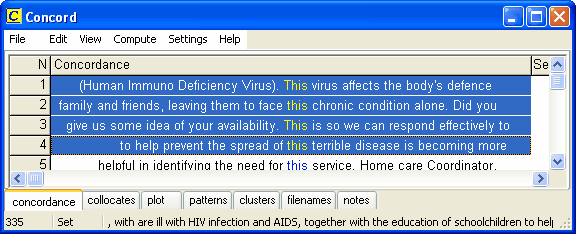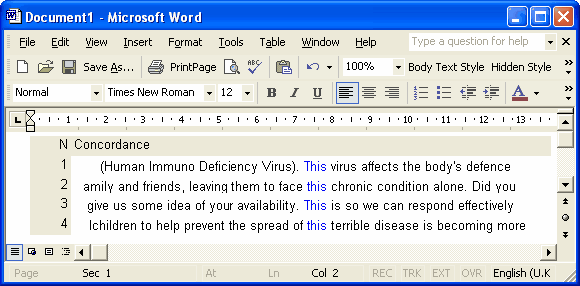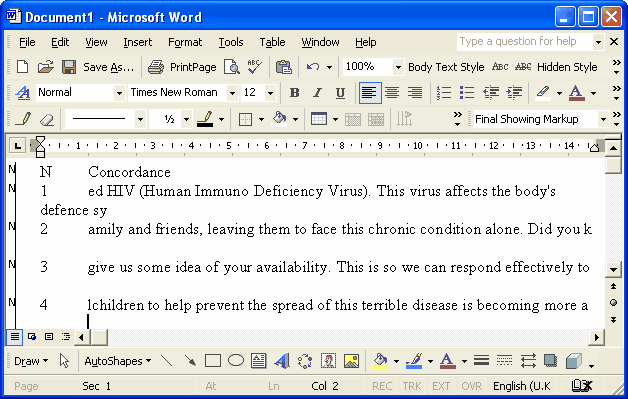Reference > clipboard
You can block an area of data, by using the cursor arrows and Shift, or the mouse, then press Ctrl/Ins or Ctrl/C to copy it to the clipboard. If you then go to a word processor, you can paste or ("paste special") the blocked area into your text. This is usually easier than saving as a text file (or printing to a file) and can also handle any graphic marks.
Example
1. Select some data. Here I have selected the first 4 lines (of 335) of a concordance, just the visible text, no Set or Filenames information.

2. Hold down Control and press Ins or C. The data is now in the Windows "clipboard" ready for pasting into any other application, such as Excel, Word, Notepad, etc.
The data is automatically placed in the Clipboard in two different formats:
as a Picture

You will probably use this format for your dissertation and will have to in the case of plotted data. In this concordance, you get only the words visible in your concordance line (not the whole line).
This is a graphic which includes screen colours and graphic data. If you subsequently click on the graphic you will be able to alter the overall size of the graphic and edit each component word or graphic line (but not at all easily!).
To get this, in Word, I chose Edit | Paste Special | Picture (Enhanced Metafile). What you see in Word is very like what you see in Concord.
as plain text
Alternatively, you might want to paste as plain text because you want to edit the concordance lines, eg. for classroom use, or because you want to put it into a speadsheet such as MS Excel™ (which will be better if you have graphic data, such as Concord dispersion plots or KeyWords plots).
Here the concordance or other data is copied as plain text, with a tab between each column. The Windows plain text editor Notepad can only handle this data format. Microsoft Word will paste (using Shift-Ins or Ctrl-V) the data as text. It pastes in as many characters as you have set in the settings for save as text, the default being 80.

Here, the concordance lines are copied, but of course they don't line up very nicely and it's hard to see the search-word (this). For the search-word to line up nicely, you should use a non proportional font, such as Courier or Lucinda Console, and it'll look like this.

Notice that at 10 point text in Lucida Console, the width of the text with 80 characters and the numbers at the left comes to over 18 cm. To avoid word-wrapping, I set the page format in Word to landscape. An alternative is to reduce the number of characters per line to say 50 or 60.